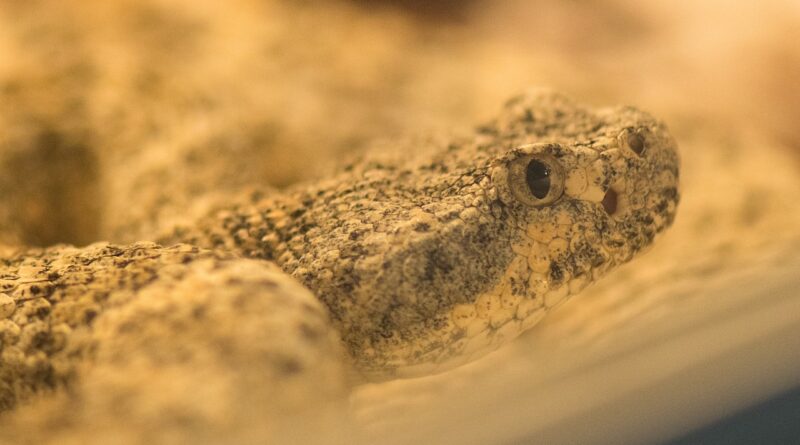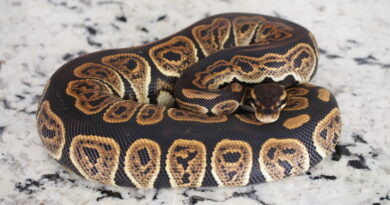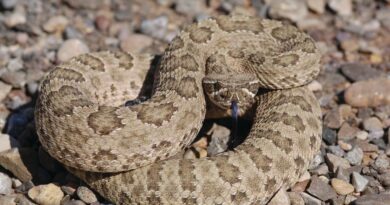Where To Find Wild Snakes In Your Backyard
Imagine stepping out into your backyard and encountering a slithering surprise: a wild snake. While this may seem alarming to some, for others it can be an exhilarating encounter with nature’s fascinating creatures. If you’ve ever wondered where to find wild snakes in your backyard, this article aims to provide you with all the information you need. From identifying snake-friendly habitats to tips on creating a welcoming environment, we’ll explore the curious world of these elusive backyard residents. So, grab your magnifying glass and get ready to embark on a backyard adventure like no other!
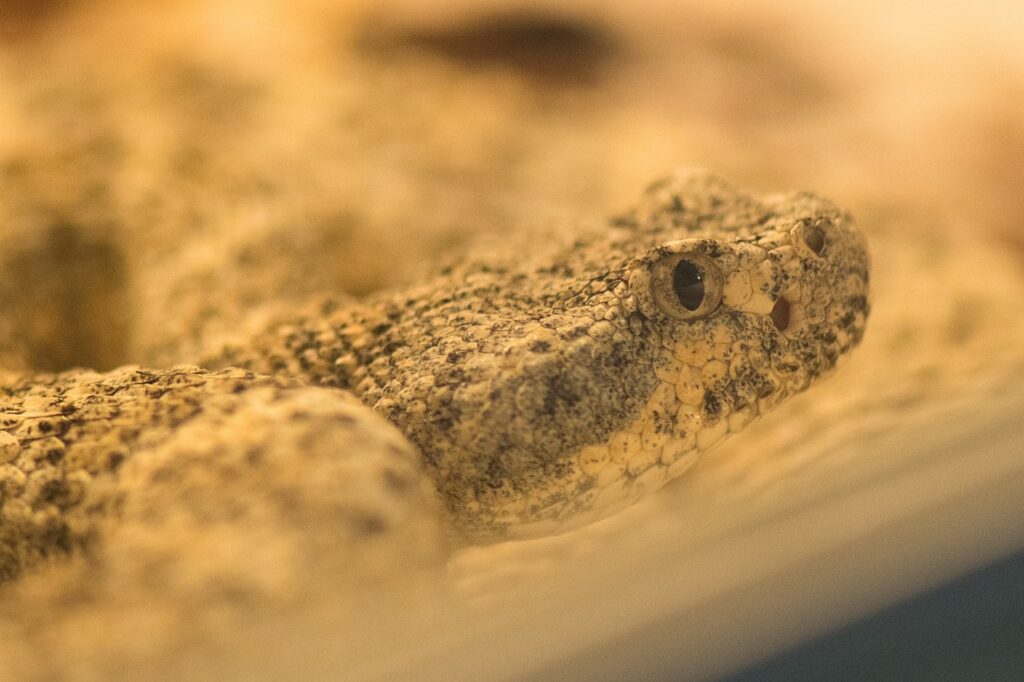
Identifying Snake Habitats
Vegetation and Shelter
Snakes are often found in areas with dense vegetation and ample shelter. They prefer places where they can hide and feel protected. Thick bushes, tall grasses, and overgrown areas provide excellent hiding spots for snakes. If you have a backyard with these types of vegetation, there’s a high chance that snakes may be residing there.
Water Sources
Water is a crucial element for snakes, as they need it for hydration and hunting. If you have a pond, stream, or any other water source in your backyard, it is likely to attract snakes. They may be seen sunning themselves near the water or slithering in and out of it. Keep in mind that some species of snakes are excellent swimmers and may even live in aquatic environments.
Rock Piles and Logs
Rock piles and log stacks provide ideal hiding places for snakes. These structures offer them a secure refuge from predators and extreme temperatures. If you have any rock piles or logs in your backyard, make sure to inspect them carefully before reaching in, as snakes may be using them as their homes.
Debris and Clutter
Snakes are known to seek out cluttered areas and piles of debris. These spaces provide them protection and camouflage, making it easier for them to hunt and stay hidden. It is important to keep your backyard clean and clutter-free to reduce the chances of attracting snakes. Regularly clear away any debris or piles of wood, as they can become attractive hiding spots for snakes.
Warm and Sunny Areas
Snakes are ectothermic creatures, meaning they rely on external sources of heat to regulate their body temperature. They are often observed basking in the sun to warm themselves. Areas in your backyard that provide sunlight and warmth, such as open fields or rock surfaces, are likely to attract snakes. These spots offer the ideal conditions for them to regulate their body temperature and remain active.
Creating Snake-Friendly Environments
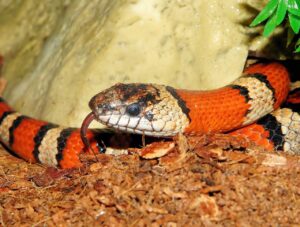
Maintaining Natural Vegetation
To create a snake-friendly environment in your backyard, maintain natural vegetation. This includes allowing grasses and shrubs to grow, as well as planting native plants. By doing so, you are providing snakes with an essential habitat and food source. Avoid using herbicides or pesticides that can harm snakes and their prey.
Providing Water Features
Consider incorporating water features in your backyard to attract snakes. This can be in the form of a small pond, a birdbath, or even a shallow dish of water. Snakes will be drawn to these water sources for drinking and hunting purposes. Remember to keep the water clean and fresh to encourage their presence.
Building Rock Piles and Log Stacks
To create snake-friendly habitat, build rock piles and log stacks in your backyard. These structures offer snakes hiding places and thermal opportunities. Be sure to arrange the rocks and logs in a secure and stable manner to prevent potential collapses. Regularly inspect these areas to ensure snakes are not disturbed during their hibernation or mating seasons.
Clearing Debris and Clutter
To discourage snakes from inhabiting your backyard, it is important to regularly clear away debris and clutter. Remove piles of wood, unused equipment, and other items that can serve as hiding spots for snakes. By keeping your surroundings clean and well-maintained, you reduce the chances of attracting snakes to your property.
Creating Sunning Spots
Snakes need warm areas to bask in the sun and regulate their body temperature. Create sunning spots in your backyard by clearing open spaces and positioning flat rocks or stone surfaces that will absorb and retain heat. These areas will entice snakes to visit and provide them with the necessary warmth they seek.
Using Attractants to Increase Sightings
Placing Attractive Food Sources
If you want to increase sightings of snakes in your backyard, consider placing attractive food sources. Snakes are primarily carnivorous and feed on a variety of prey such as rodents, insects, and amphibians. By providing a food source, such as bird feeders or a small frog pond, you create an incentive for snakes to frequent your property.
Utilizing Scent Trails
Snakes have a keen sense of smell and use scent trails to navigate and locate prey. To attract snakes, you can sprinkle a light trail of food scent, such as mouse bedding or earthworm castings, near their preferred habitats in your backyard. This can help draw them towards the desired areas.
Installing Nesting Boxes
Installing nesting boxes can be an effective way to attract snakes. These structures mimic natural tree cavities and can serve as ideal nesting sites for snakes. Place the nesting boxes in sheltered areas or near water sources to entice snakes. Make sure the boxes are secure and provide suitable insulation for the snakes.
Using Heat Sources
Snakes are attracted to heat sources, especially during cooler seasons. Consider incorporating heat sources in your backyard, such as heat lamps or carefully positioned solar panels, to increase the chances of snake sightings. Ensure that any heat sources used are safe and do not pose a risk to the snakes or other wildlife.
Implementing Snake-Friendly Landscaping
Designing your landscaping with snake-friendly features can help attract and support snake populations. This includes incorporating a variety of plants, providing proper ground cover, and avoiding the use of chemicals that may harm or repel snakes. By creating a welcoming environment, you can encourage snakes to visit and thrive in your backyard.
Snake-Friendly Garden Design
Native Plant Selection
When designing a snake-friendly garden, prioritize native plant species. These plants provide not only essential habitat for snakes but also support the entire ecosystem. Native plants attract prey species, such as insects and small mammals, which are important food sources for snakes. Incorporate a diverse range of plants to create a balanced and sustainable ecosystem.
Providing Natural Hiding Spots
To make your garden more appealing to snakes, provide natural hiding spots. This can be achieved by incorporating dense shrubs, rock crevices, or fallen logs. These features create safe havens for snakes and increase their overall habitat quality. Ensure there are ample hiding spots across your garden to accommodate a variety of snake species.
Including Water Features
Water features, such as small ponds or shallow pools, are beneficial for both snakes and the overall garden ecosystem. Snakes will be attracted to these sources for drinking, cooling off, and hunting. Make sure the water features have gently sloping edges to allow easy access for snakes. Additionally, consider adding aquatic plants to further enhance their attractiveness.
Allowing Natural Pests
Snakes play a crucial role in controlling pest populations, such as rodents and insects. To create a snake-friendly garden, resist the urge to use chemical pesticides and instead embrace natural pest control methods. By allowing natural pests to exist, you provide a consistent food source for snakes, ensuring their presence in your garden.
Avoiding Harmful Chemicals
Avoid using harmful chemicals, such as herbicides and insecticides, in your garden. These chemicals can harm snakes directly or indirectly by eliminating their prey and disrupting the ecosystem. Opt for natural, organic alternatives to control pests and maintain the balance of your garden’s ecosystem.

Understanding Snake Behavior
Diurnal vs. Nocturnal Species
Snakes can be categorized as either diurnal or nocturnal, depending on their activity patterns. Diurnal species are active during the day, while nocturnal species are active at night. Understanding the behavior of the snake species in your area can provide valuable insights into their habits and preferred habitats.
Seasonal Movements
Snakes exhibit seasonal movements that are influenced by factors such as temperature, food availability, and breeding patterns. Some snakes may migrate to find suitable hibernation sites or breeding grounds. By understanding these movements, you can anticipate when and where snakes are more likely to be present in your backyard.
Hibernation Patterns
Many snake species go into hibernation during the colder months when food sources become scarce. They seek out underground burrows or other protected areas to survive the winter. It is essential to avoid disturbing potential hibernation sites to ensure the survival of these snakes. Understanding the hibernation patterns of snakes in your area is crucial for their conservation.
Reproduction and Mating
Snakes have unique reproductive behaviors that vary among species. Some engage in elaborate courtship rituals, while others may engage in communal mating. Learning about the reproductive habits of the snakes in your area can help you identify their breeding seasons and better understand their behavior during these times.
Hunting and Feeding
Snakes are skilled hunters, using their senses to locate and capture prey. They employ a range of hunting strategies, including ambush, constriction, or venomous strikes. Understanding the feeding habits and preferred prey of snakes can provide insights into their behavior and their role in maintaining a balanced ecosystem.
Safety Precautions
Educating Yourself
Before attempting any snake-related activities, it is important to educate yourself about snakes, their behavior, and the species that reside in your area. Familiarize yourself with their venomous and non-venomous characteristics, as well as their preferred habitats. This knowledge will help you make informed decisions and take appropriate safety precautions.
Identifying Venomous Species
Knowing how to identify venomous snake species is crucial for your safety. Learn to recognize the unique features and patterns of venomous snakes in your area. Keep in mind that not all venomous snakes have rattles or hoods, so it is essential to rely on accurate identification techniques and not make assumptions.
Handling and Capturing Guidelines
Handling and capturing snakes should only be done by trained professionals or individuals with the necessary experience and knowledge. Avoid attempting to handle or capture a snake if you are not confident in your abilities. Mishandling snakes can be dangerous for both you and the snake, often resulting in stress or severe bites.
Protective Clothing and Equipment
When working in snake-prone areas or attempting to handle snakes, it is crucial to wear appropriate protective clothing and equipment. This includes long pants, sturdy boots, gloves, and, if necessary, snake-proof gaiters. These items can help minimize the risk of snakebites and provide some protection in case of accidental encounters.
Seeking Professional Help
If you encounter a snake and are unsure of its species or behavior, it is advisable to seek professional help. Local wildlife organizations, herpetological societies, or experienced snake handlers can provide guidance and assistance in safely dealing with snakes. Remember, it is always better to err on the side of caution when it comes to interacting with snakes.
Common Backyard Snake Species
Garter Snakes
Garter snakes are one of the most common snake species found in North America. They are non-venomous and often have distinct longitudinal stripes running along their bodies. Garter snakes are highly adaptable, can be found in a variety of habitats, and are beneficial in controlling rodent populations.
Rat Snakes
Rat snakes, also known as corn snakes or chicken snakes, are non-venomous constrictor snakes. They are excellent climbers and are often found in trees or near buildings. Rat snakes are beneficial in controlling rodent populations and are commonly encountered in backyard environments.
Milk Snakes
Milk snakes are non-venomous constrictor snakes that are often mistaken for coral snakes due to their similar color patterns. They feed primarily on small mammals, birds, and reptiles. Milk snakes are beneficial in managing rodent populations and are commonly found in a variety of habitats, including backyards.
Copperhead Snakes
Copperhead snakes are venomous snakes found in the eastern and southern regions of the United States. They are known for their distinctive copper-colored heads and crossband patterns. Copperhead snakes prefer forested areas but may venture into backyards, especially if there are suitable hiding spots and prey availability.
Gopher Snakes
Gopher snakes, also known as bullsnakes, are large and non-venomous snakes found in a variety of habitats, including grasslands and deserts. They are known for their ability to mimic rattlesnakes by vibrating their tails and hissing loudly. Gopher snakes play an important role in rodent control and may occasionally be found in backyard environments.
Snake Conservation Measures
Preserving Natural Habitats
Protecting and preserving natural habitats is crucial for snake conservation. This includes avoiding habitat destruction, minimizing pollution, and conserving key ecosystem features such as rivers, wetlands, and forests. By safeguarding natural habitats, we provide snakes with the necessary resources to survive and thrive.
Utilizing Snake-Friendly Pest Control
Instead of using chemical pesticides, consider implementing snake-friendly pest control methods. Encourage natural pest predators, like snakes, by providing suitable habitats and food sources. Implementing integrated pest management strategies can help maintain a healthy balance between pests and predators while minimizing harm to the environment.
Educating the Community
Educating the community about the importance of snakes and dispelling common myths and fears is vital for snake conservation. Promote awareness through educational programs, community events, and informative signage. By increasing public understanding and appreciation for snakes, we can foster a more harmonious coexistence with these fascinating creatures.
Reporting Sightings
If you come across snakes in your backyard or observe them in natural areas, consider reporting your sightings to local wildlife organizations or herpetological societies. This information helps researchers and conservationists better understand snake distributions, populations, and habitat preferences, aiding in their conservation efforts.
Supporting Local Wildlife Organizations
Supporting local wildlife organizations and conservation initiatives is instrumental in protecting snake populations. Donate, volunteer, or participate in community-led conservation projects that focus on preserving snake habitats, conducting research, and promoting coexistence. Your support can make a significant impact on snake conservation efforts.
Frequently Asked Questions
Are snakes dangerous to find in my backyard?
While snakes can be startling to encounter, most backyard snake species are harmless and play a crucial role in maintaining ecological balance by controlling rodent populations. However, it is essential to exercise caution, as some snake species are venomous. Educate yourself about the snake species in your area and their typical behaviors to mitigate any potential risks.
How can I tell if a snake in my yard is venomous?
Identifying venomous snakes can be challenging, as their appearance may vary. In general, venomous snakes typically have distinct markings, triangular-shaped heads, and heat-sensing pits between their eyes and nostrils. However, the best approach is to avoid any direct contact with snakes and seek guidance from local snake experts or wildlife professionals if you are unsure of a snake’s species and potential danger.
What should I do if I encounter a snake?
If you encounter a snake, the best course of action is to maintain a safe distance and observe the snake from afar. Do not attempt to handle or provoke the snake, as this increases the risk of bites or injuries. If the snake is in an area where it poses a significant risk to humans or pets, professional snake removal services can be contacted to safely handle the situation.
Are snakes beneficial for my garden?
Yes, snakes are beneficial for gardens as they help control pest populations, such as rodents and insects. Snakes play an important role in maintaining the ecological balance of a garden by reducing pest damage and promoting a healthier, more sustainable ecosystem. Encouraging these natural pest predators can benefit your garden’s overall health and productivity.
Can I relocate a snake I find in my backyard?
Relocating snakes is not recommended without proper training and permits. Snakes have a remarkable ability to find their way back to their original habitat, and relocation can significantly impact their survival and disrupt their natural behavior. It is best to leave snakes undisturbed unless they pose an immediate risk to humans or animals, in which case professional assistance should be sought.
Conclusion
Creating a snake-friendly environment in your backyard can be a rewarding experience that not only supports snake populations but also promotes biodiversity and a healthy ecosystem. By understanding snake habitats, incorporating snake-friendly features, and adopting snake conservation measures, you can play a crucial role in preserving these fascinating creatures. Remember, snakes are an integral part of our natural world, and by coexisting peacefully with them, we contribute to the overall harmony of our surroundings.

